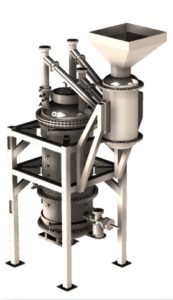Environmentalists have many battles to fight such as single-use plastics, factory smoke, and cow flatulence. So, you can imagine their shock when Bitcoin mining showed up as yet another threat to the environment. The energy consumption associated with bitcoin has a lot of people concerned: in fact, some estimate Bitcoin mining can consume an entire small country’s worth of electricity each year! This pesky method of creating decentralized currencies with the ability to bank the entire world could be slowing our journey toward green energy initiatives. Oh, Bitcoin, why must you challenge us so?
Bitcoin mining is power-intensive because it involves solving complex mathematical problems requiring large amounts of computing power and electricity. This is typically done through the burning of coal or other fossil fuels, leading to high carbon emissions.
But recently, a new Bitcoin mining trend has emerged. Energy companies are using garbage to mine bitcoin. That means Bitcoin is now literal garbage and also the greenest of renewables, which should satisfy even the most hardcore environmentalists.
How It Works
One such company making this new Garbage-Based-Bitcoin (GBB) is called XcelPlus International Inc. These guys are the masters of W2E (Waste-to-Energy). The primary tool XcelPlus uses to accomplish W2E is something called a Plasma Gasifier. In a nutshell, garbage is fed into one side of the Plasma Gasifier, a badass plasma torch burns it, and then something called syngas is produced which can be used to power the equipment needed to mine GBB.

Since that was a bit of an oversimplification of the GBB mining process, let’s take a closer look at how plasma gasification works:
- Garbage, waste coal, or other hazardous waste is placed into the hopper of the plasma gasifier
- The plasma torch superheats the material, burning it and disassociating its molecules into atoms
- The atoms are then recombined into syngas through, well, science
- Syngas is mainly made up of carbon dioxide (CO2), carbon monoxide (CO), and hydrogen (H).
- The syngas is captured and can then be used to power generators to mine GBB or can be put into a Fischer Tropsch system that converts it into diesel, Jet-A/JetA-1 fuel, or gasoline
When mining GBB, the plasma gasifiers can convert 50 tons of waste into energy per day. 50 tons of garbage produces enough syngas to run a power generation system capable of putting out 1.5 – 2 Megawatts (enough to power a small town). In addition to the insane power generation, the owner/operator of the gasifier would qualify for carbon credits, would get paid to accept the waste, and would receive Bitcoin from mining. Waste can be accepted from “landfills, old coal plants, toxic waste sites, medical centers, petroleum companies, and similar sites.”
You might be asking yourself, self, what are the byproducts of plasma gasification? Well, there are three: syngas, slag, and heat. We know that syngas can be used to power generators which can power ASIC miners or any other crypto-mining equipment.
But what happens to the slag and heat? The heat (and syngas) produced from plasma gasification can be used to run another type of power generator called an Organic Rankine Cycle system, which is capable of putting out 5 Megawatts of power.
The slag turns into black, glassy feeling rocks that look and feel like obsidian. These “rocks” can be used in concrete, asphalt, and brick or paving stone molds for construction.
In closing, Bitcoin mining is becoming greener and more sustainable due to the emergence of companies such as XCelPlus that are using garbage, waste coal, and other hazardous materials to power Bitcoin mining operations. Not only is Bitcoin mining becoming green, but it also offers a unique way to dispose of hazardous materials, reducing the environmental impacts associated with them. Bitcoin can now be seen as a green, renewable energy source and environmentalists can rejoice in its glory!
This is a Contributor Post. Opinions expressed here are opinions of the Contributor. Influencive does not endorse or review brands mentioned; does not and cannot investigate relationships with brands, products, and people mentioned and is up to the Contributor to disclose. Contributors, amongst other accounts and articles may be professional fee-based.

